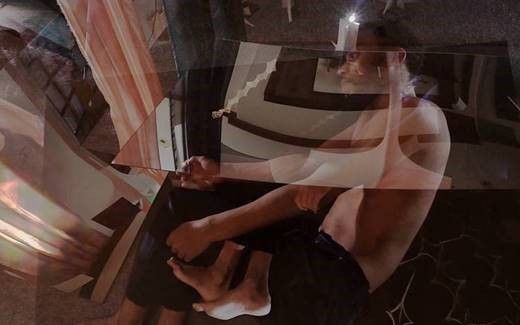South Korea, Visual Arts, 2015
Sung Hwan
Kim

Sung Hwan Kim could best be described as a storyteller. Whether with performance, music, sculpture, or drawing — but especially with film and often in collaboration with the New York-based musician David Michael Digregorio alias Dogr — Kim weaves together the real with the fictional, and hearsay with that which was personally experienced, to create a dense, often atmospheric or dreamy universe whose borders are blurred beyond recognition.
In »from the commanding heights« (2007), he uses irony to stake out his artistic territory, beginning the film with the following words: »I know that it doesn’t matter if things are true or not, but this is a true story.« He then proceeds to tell the story of a woman who has sprouted a third ear on top of her head and whose long throat houses a family of snakes. The take is accompanied by an image of Kim drawing out the depicted scenes on transparent film. Later on in the film, he tells a story his mother had told him as a child in Seoul, Korea: at that time, people said that the frequent power outages could be blamed on the president, Park Chung-Hee, who liked to visit his mistress under the cover of darkness. In the retelling, the rumour acquires its own reality as a story that imposes reason upon the world.
Seoul is also the focus of Kim’s film »summer days in Keijo — written in 1937« (2007), which he based on the drawings of the Swedish ethnologist and zoologist Sten Bergman. Bergman visited Keijo in 1937, as Seoul was known at the time by its Japanese occupiers, who changed not only the name, but also the face of the city during their regime. The film follows a young European woman during her travels in the modern Seoul — a city that has once again undergone a radical transformation, this time as a result of modernisation. The overlapping layers of time create a palpable sense of history as they oscillate between sound and image.
Kim also integrates a variety of artistic media in his exhibitions: his presentation at the tanks in London’s Tate Modern in 2012 was conceived as a universe in miniature, where film screens flicker, their glow illuminating and bringing to life static drawings; here, displays and seating arrangement are transformed into sculpture, and people moving in front of the projection screens become part of the work itself with their silhouettes. While he takes a narrative approach in his movies to erase the line between fact and fiction and past and present, in his exhibitions he employs an approach that is at once sculptural and performative.
Text: Dominikus Müller
Translation: Amy Pradell
Camera/editing: Uli Aumüller, Sebastian Rausch


